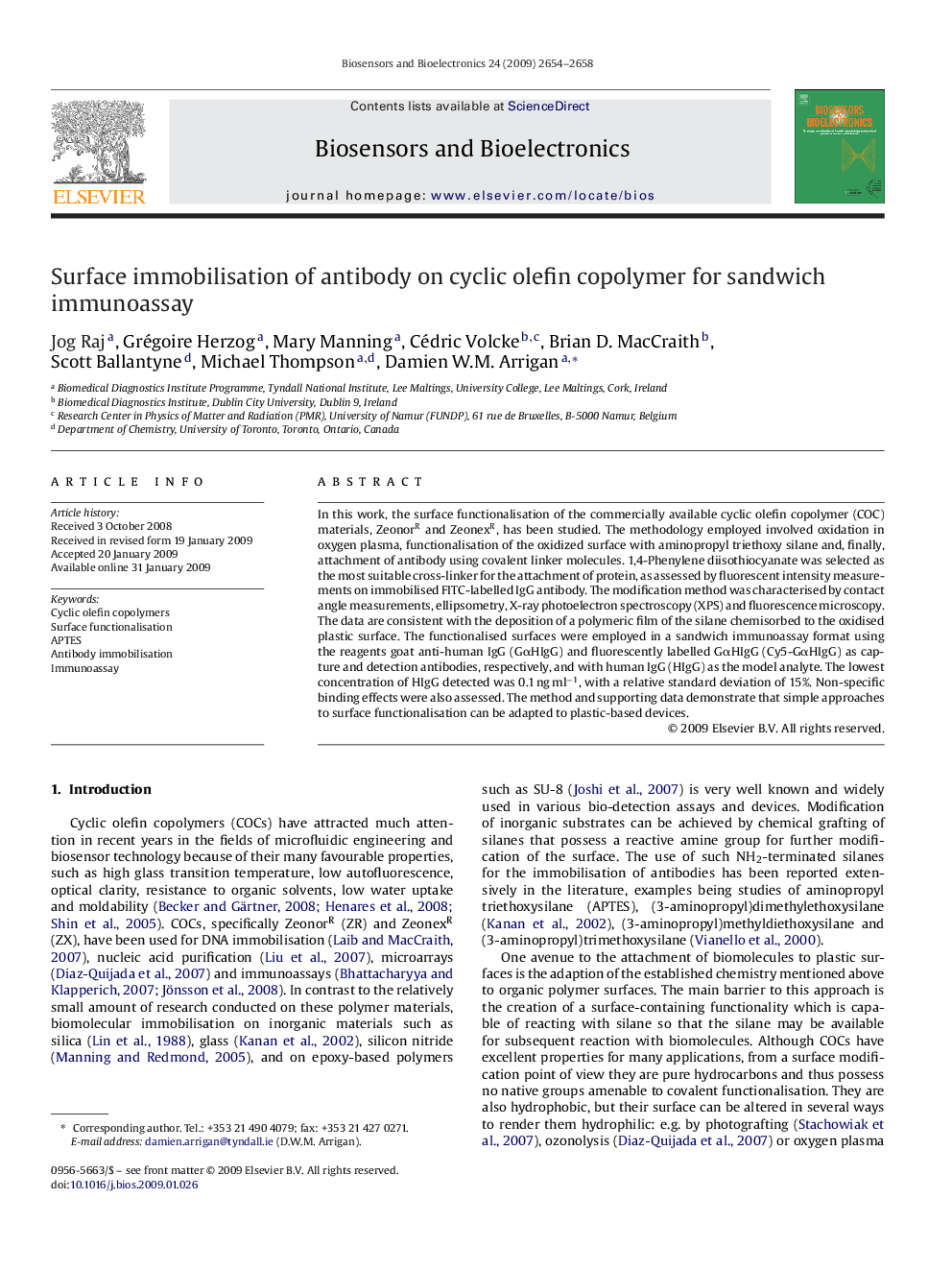| Article ID | Journal | Published Year | Pages | File Type |
|---|---|---|---|---|
| 868726 | Biosensors and Bioelectronics | 2009 | 5 Pages |
In this work, the surface functionalisation of the commercially available cyclic olefin copolymer (COC) materials, ZeonorR and ZeonexR, has been studied. The methodology employed involved oxidation in oxygen plasma, functionalisation of the oxidized surface with aminopropyl triethoxy silane and, finally, attachment of antibody using covalent linker molecules. 1,4-Phenylene diisothiocyanate was selected as the most suitable cross-linker for the attachment of protein, as assessed by fluorescent intensity measurements on immobilised FITC-labelled IgG antibody. The modification method was characterised by contact angle measurements, ellipsometry, X-ray photoelectron spectroscopy (XPS) and fluorescence microscopy. The data are consistent with the deposition of a polymeric film of the silane chemisorbed to the oxidised plastic surface. The functionalised surfaces were employed in a sandwich immunoassay format using the reagents goat anti-human IgG (GαHIgG) and fluorescently labelled GαHIgG (Cy5-GαHIgG) as capture and detection antibodies, respectively, and with human IgG (HIgG) as the model analyte. The lowest concentration of HIgG detected was 0.1 ng ml−1, with a relative standard deviation of 15%. Non-specific binding effects were also assessed. The method and supporting data demonstrate that simple approaches to surface functionalisation can be adapted to plastic-based devices.
